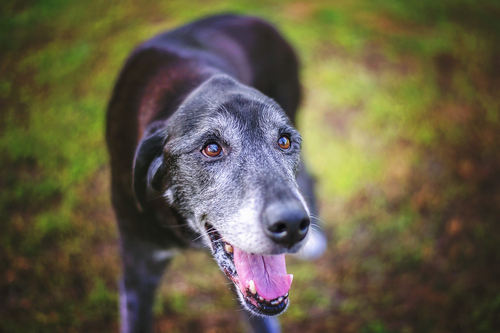Time is an inescapable fact of life that affects all of us, and that includes our pets too. So, it makes sense that some of the changes we experience as we get older are also true for our pets, and just like us they can suffer from arthritis.
How would I know?
Unfortunately, our pets can’t talk to us, so they can’t tell us that their back is aching or that their elbows are sore. This means that it’s easy for early arthritis to be hidden, and for our pets to suffer longer before we notice big changes like limping. However, there are some subtle signs, which once we know what to look for, can help us pick up indications that our pets might be in pain.
What are the signs?
One of the earliest signs of arthritis is “slowing down” and resting more. This isn’t necessarily just old age – arthritis is painful, so our pets don’t want to move, and so choose to spend more time walking rather than running, or even just resting in one spot.
Another sign of arthritis that can occur in many patients is a change in personality – initially our pets may seem less social than they used to be. But this can progress to more obvious changes in behaviour like grumpiness, or even uncharacteristic aggression towards owners or other pets.
Some of the early signs of osteoarthritis can be slightly different depending on the species, so now we’ll talk about cats, dogs and rabbits separately.
Dogs
As our dogs start to feel sore and stiff due to arthritis, they can show all the signs we talked about above, but also some other things too. Dogs can be prone to licking or chewing at painful joints, and eventually their saliva can stain the fur in these areas a dark brown.
If their arthritis affects specific joints you may see their behaviour become defensive or wary when you touch the affected area – such as looking sharply at your hand or grumbling and even growling. You might also notice them groaning or grumbling when they go to get up from their beds, or when they go to lie down.
More obvious signs are changes to the way they move / walk or run, which becomes lameness, and even limping when they move.
Cats
As we know our cats are very different from dogs in their behaviour, even when nothing is wrong – so it’s no surprise that they act differently when suffering from arthritis too. Unlike dogs, cats rarely start limping due to arthritis.
Our cats can still “slow down” or become less playful, grumpy, or even become aggressive, but we’re looking for other subtle signs too. Some of these signs include no longer wanting to jump onto the work top in the kitchen or up on to the garden fence. Your cat may also choose not to climb in the ways they once did, or you may see changes in the way they toilet – some cats can struggle to get into or out of the litter tray so they change their habits.
Another sign to look for are changes to grooming – as their joints become painful it becomes harder to bend and reach all the areas of their body, so cats with arthritis may become scruffy in appearance, especially over their backs, or along their tails.
Rabbits
Signs of arthritis in our bunnies can be harder to spot than in other species, initially because they are a prey species – this is because they have evolved to hide pain from any potential predators. Bunnies can become anti-social, grumpy or aggressive in the early stages.
They may also become reluctant to jump over obstacles or steps that they used to tackle easily. If they use a litter tray you may spot them hesitating to get into it or choosing not to use it at all. You may notice that they have a reduced appetite, or start to struggle to groom themselves, or that they become dirty at their bottom.
Some rabbits can have problems getting into the normal position to urinate, and so they may become wet on their bellies and bottoms too. You might also see stiffness when your bunny starts to move, especially if they have been lying and resting for a long period.
Anything else to think about?
As they get older our pets’ metabolisms change, which means they don’t burn calories at the same rate as they did when they were young. This makes it easy for them to gain weight, and even become obese over time. Less movement and getting heavier is a vicious cycle, which increases the pain suffered with arthritis. This is why keeping on top of our pets’ weight is essential if they suffer from arthritis.
Whilst time passing means we do have to get used to some changes, getting older doesn’t mean we expect to have any less of a quality of life, and we shouldn’t accept less for our animal companions either.
If you have noticed any of the above signs in your pet recently, or they are getting older, please talk to a member of our team. We would be happy to examine your pet in a check-up, talk through anything we find and answer any questions you may have. Together we can create a plan to manage any arthritic changes your pet has using a variety of techniques (as well as medications if needed) to keep them happy and comfortable.

